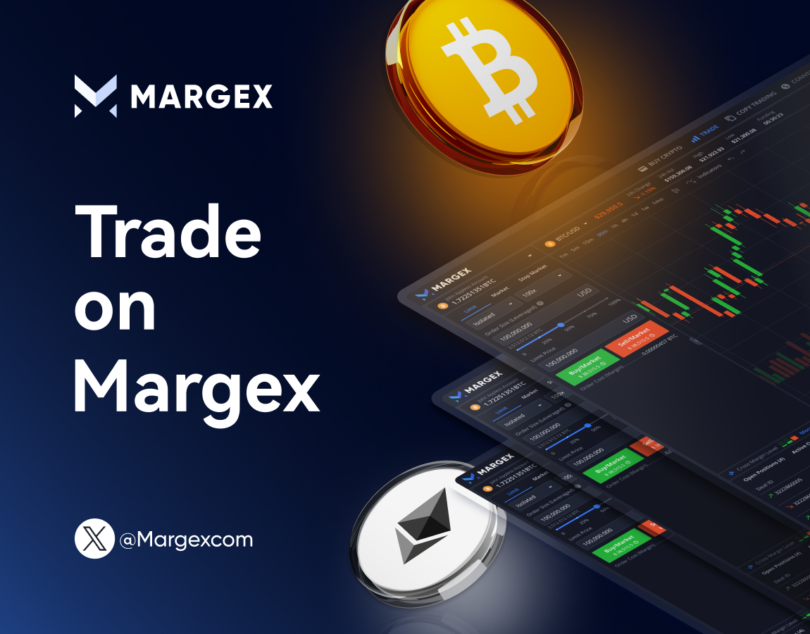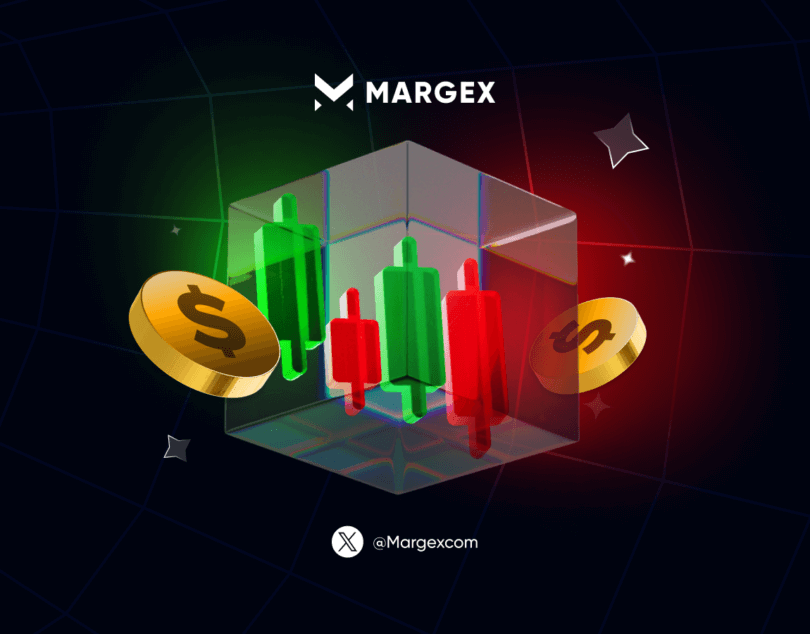How Crypto Liquidation Works?

In crypto, a liquidation is the forced closing of a trader’s position due to insufficient funds to maintain an open trade. This commonly occurs in leveraged trading when the margin balance falls below the maintenance margin requirement.
The financial industry experienced a revolution through cryptocurrency trading, which provided numerous opportunities to achieve important profits. However, the chances for substantial gains through crypto trading have major threats that mainly affect leveraged trading operations. Traders need to understand that liquidation represents their most serious risk. Everyone participating in the crypto market must know about crypto liquidation functions.
What is Liquidation?
Crypto trading depends heavily on liquidation, which applies specifically to leverage positions. An asset transformation process into cash fulfills financial commitments and loss compensation. An exchange automatically sells a trader’s collateral during crypto trading to reduce a losing leveraged position. The method provides advantages for traders and trading platforms when they need to minimize risks.
How does Liquidation Work in Leveraged Trading?
The adoption of perpetual swaps in trading platforms through leveraged long positions means traders expect the asset value to rise. The price drop leads to rising losses throughout the position. Combining leverage with these price declines will send investments under the red line unless the price stabilizes. Traders who hold short positions also suffer from the same level of risk when the market value of their trade positions declines, which raises concerns about how liquidation works in such scenarios.
Preventing these risks requires exchanges to set a predefined price point called the liquidation price. The trading system automatically executes the close function when an asset price touches the predefined threshold. The liquidation price becomes accessible to traders for enhanced risk control measures during position establishment. Leverage level determination directly affects the spot where liquidation occurs. With 5x leverage on long positions in Bitcoin, the trader needs greater price decreases for automatic liquidation, while 20x leveraged positions will trigger liquidation process more easily.
Practical Example
A Bitcoin investment through 10x leverage functionality requires an investor to use the account balance 10 times. The position becomes at risk of liquidation when Bitcoin’s value drops by 10%. By setting up stop-loss orders at 5% loss levels and maintaining extra funding, the trader reduces potential loss size and the chance for automatic liquidation even in volatile market conditions.
The Liquidation Process
All leveraged trade entries require traders to present initial margin collateral, which is security for the position. The exchange tracks trade valuation at all times but starts the liquidation p process when losses reach near the provided collateral value. The built-in security system protects the traders’ accounts and the trading exchange.
Key Factors That Trigger Liquidation
Several factors contribute to liquidation in leveraged trading:
Leverage Level: Higher leverage creates more chances for liquidation process because small market movements can initiate it.
Market Volatility: Rapid market price movements can instantly harm the worth of a position enhanced through borrowing.
Collateral Management: Due to insufficient collateral, traders must effectively manage their funds, which speeds up the liquidation process.
Users who analyze these elements can implement trading methods that lower their risk from liquidation while building superior trading strategies.
The Mechanics of Leveraged Trading
Through leveraged trading, the exchange or other traders can provide borrowed funds to traders who open positions that exceed their investment capital. The trading system with 10x leverage enables investors to control positions up to $10,000 when depositing their capital at only $1,000. Leverage functions to boost investments, yet it makes losses grow equivalently.
Margin Requirements and Maintenance Margin
Throughout leveraged trading, traders must sustain at least a specified minimum amount of account funds representing the maintenance margin. Due to market events, the exchange starts liquidating when trader equity reaches below-defined thresholds.
Types of Liquidation
Partial Liquidation: Traders must close down certain positions until the account achieves the necessary margin requirements, a procedure known as partial liquidation.
Total Liquidation: The trader needs to close their entire active position, which results in a total loss of the initial funding deposited for that trade.
Factors Leading to Liquidation
Several factors can trigger liquidation:
High Leverage: Excessive leverage causes traders to have limited protection space. Small price shifts in the market quickly lead to major losses that surpass maintenance margin rules.
Market Volatility: The volatility of cryptocurrency markets plays a major role in triggering trader liquidations. Sudden market price fluctuations lead to quick depletion of trader equity, which results in forced liquidation.
Insufficient Monitoring: Unmonitored positions may pass by crucial times when collateral can be deployed, or positions can be closed before liquidation happens.
Recent Examples of Crypto Liquidations
The cryptocurrency market experienced substantial liquidations, particularly during periods of heightened volatility. The market suffered a major decline in early 2025, which created widespread liquidations across the board. Crypto exchanges watched as more than $1 billion worth of positions automatically sold in less than one day, with Bitcoin making up a majority of $164 million and Ethereum at $81.38 million.
Impact of Liquidations on the Crypto Market
Massive market liquidations tend to produce intensified market declines. The simultaneous liquidation of numerous leveraged positions activates an accelerating downward price trend, resulting in new liquidations. Market confidence suffers erosion when this phenomenon occurs because it leads to greater market volatility.
The 2025 Market Downturn
Bitcoin suffered a 17.2% loss in value during February 2025, marking the worst market drop since June 2022. A record amount of $3.3 billion flowed out from Bitcoin ETFs during this market downturn. Analysts suggested the market decrease occurred across various risk-aware investments, and large Bitcoin ETF withdrawals triggered it. The selling activity of “faster money” institutional investors triggered the market downturn because they unloaded Bitcoin to maintain portfolio balance and secure earnings.
Major Cryptocurrency Liquidations and Their Impact on Investors
Large financial losses have afflicted cryptocurrency investors because of major market liquidations across this sector. Notable instances include:
1. Three Arrows Capital (3AC) Liquidation
Three Arrows Capital became subject to court-ordered liquidation in June 2022 because it could not meet margin obligations and repayment conditions. This firm’s trading losses reached $3.5 billion, which became one of the highest losses ever seen by hedge funds in their payments to 27 separate creditors.
2. Terra Blockchain Collapse
In May 2022, TerraUSD (UST) and its respective cryptocurrency, LUNA, experienced a total collapse. The collapse reduced market capitalization to $45 billion in a week, causing severe losses to investors throughout the crypto market.
3. ByBit Exchange Hack
The virtual assets stored at the ByBit cryptocurrency exchange were stolen when the platform fell victim to a February 2025 hacking incident, which amounted to $1.5 billion in losses. According to agency reports, north Korean hackers received blame from the FBI for conducting the largest cryptocurrency theft in history. Experts believe North Korea will use the stolen money to finance its atomic and missile programs.
4. LIBRA Cryptocurrency Scandal
The LIBRA token increased from $0.000001 to $5.20 in value during the 40 minutes after Argentine President Javier Milei promoted it. The founders’ 70% ownership of the total supply brought catastrophic results when they sold their tokens at the price peak, triggering an 85% price decline. A large number of investors, from 74,000, sustained approximately $87 million in losses after the developers conducted a “rug pull” scheme.
5. Market Volatility and Liquidations
The cryptographic market volatility causes regular massive trading losses because of its nature.
June 2023: The market suffered a major decline after traders lost $320 million due to the SEC lawsuit against Binance in June 2023.
August 2023: A rapid market selloff during August 2023 triggered $1 billion of liquidations, while Bitcoin witnessed its lowest point in two months.
December 2024: The market downturn of December 2024 sparked over $1.4 billion in liquidations that harmed more than 427 thousand traders throughout 24 hours.
The series of incidents demonstrates the dangers cryptocurrency investment presents to investors because they illustrate the importance of careful decision-making.
Understanding Liquidation Risks and Prevention Strategies
Liquidation serves as a safeguard for both traders and exchanges against excessive financial losses. However, it also introduces several risks that traders should be aware of:
- Complete Loss of Initial Collateral: Traders may forfeit their initial margin if liquidation occurs.
- Increased Market Volatility: Large-scale liquidations can intensify market fluctuations, potentially triggering further liquidations.
- Emotional and Psychological Pressure: The possibility of liquidation can cause stress, influencing trading decisions and risk perception.
Strategies to Prevent Liquidation
Business success in this field requires adopting proper risk management methods to reduce liquidation risks. The following list shows essential methods for traders to adopt:
1. Opt for Sensible Leverage
Using leverage provides greater profit potential but, at the same time, produces amplified financial losses. New investors must use reduced leverage since it protects them from losses that would trigger liquidation. Advanced traders should evaluate changing leverage parameters while examining market factors and risk capacity.
2. Utilize Stop-Loss Orders
With a stop-loss order, traders can automate their trading exits through set price triggers that protect their investments from major losses. This mechanism works during market volatility, but traders cannot act on spur-of-the-moment decisions.
3. Maintain a Sufficient Collateral Buffer
An exchange allows traders to safeguard their positions by applying collateral amounts exceeding minimum requirements. This helps protect against market volatility and liquidation risks, and users benefit from more safety through enough margin padding.
4. Stay Updated on Market Trends
A series of active market data analyses combined with financial updates and asset price-dependent external elements allows traders to base their decisions on solid information. Preventive actions enable traders to modify their positions before market movements that could force them to liquidate.
5. Diversify Trading Positions
Distributing investments across multiple assets helps traders avoid excessive risk through a single leveraged trading position. A diversified trading portfolio reduces the likelihood that one loss can damage the entire trading position.
These risk management strategies, which promote sustainable trading practices, can achieve successful risk management and decrease the likelihood of forced liquidation.
Understanding DeFi Liquidation
DeFi platforms manage their liquidations through decentralized methods. Users in DeFi lending protocols can obtain assets through the collateral they provide. The value drop of collateral assets below a predefined threshold leads to a position under collateralization, which initiates the liquidation process. The protocol’s solvency remains intact, while all lenders get security because of this process.
When participating with DeFi, borrowing users must present cryptocurrency as security. Digital assets display considerable value changes, affecting the value of collateralized assets over only short periods. The collateral becomes insufficient to guarantee the lender because its value decreases significantly. A major hazard for borrowers is when providing collateral because any drop in value may lead to loss.
How DeFi Liquidation Works
Every borrower on a lending protocol must post cryptocurrency assets as security to obtain their loan. The protocol activates automatic liquidation whenever the market price of secured property falls below the established liquidation threshold. Assets are sold automatically, and collateral is sold at discounted prices to pay back the loan. The borrower loses their collateral due to declining market value instead of failure to repay the debt. The liquidation process in DeFi networks becomes determined by how market rates change.
Risks for DeFi Lenders
Defi lending presents market volatility-related risks to its users. After borrowers lose their collateral because the market demands little interest in their assets, the lending protocol often experiences difficulties recovering the lent funds. Protocols mitigate the risk by discounting auctioned asset prices through their sale procedures to let third parties acquire them at reduced prices. The system functions to keep loans flowing, yet this method demonstrates the unpredictable situation that lenders encounter during market volatility.
Conclusion
Leveraged cryptocurrency trading includes a fundamental risk factor known as liquidation. Anyone trading cryptocurrencies should master liquidation risk, activating conditions, and risk reduction measures. Prudent risk management practices and market condition monitoring enable traders to handle volatility in the crypto markets better.
The Anti-Liquidation Protection system of Margex acts as a stabilization mechanism for isolated-margin positions’ estimated liquidation price despite decreasing market values of trader margins. Through its Anti-Liquidation Protection system, Margex enables traders to hold positions through wide market swings due to stabilized estimated liquidation prices that prevent sudden liquidations.
Margex users have the freedom to utilize cross-margin or isolated margin systems, which accommodate traders who need distinct margin approaches.




